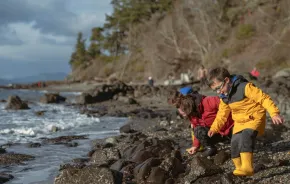
Photo:
Courtesy of Clipper Vacations
Black and white and iconic… and maybe on their way to extinction? Take the kids to see the orcas now; there’s a very real possibility that our flagship marine mammal won’t be around when our children grow up. (Want to help the orcas? We've compiled a list of 7 things you and your family can do to help.)
The Salish Sea’s critically endangered Southern Resident orca population is at an all-time low of 75 whales. One young female is ailing and seven orcas have died in the past two years.
Recently, another orca death captured the world’s attention — a mother orca carried her dead newborn calf for more than two weeks. Victoria Souze, a naturalist for San Juan Cruises, saw the grieving mother last Thursday while leading a whale-watching tour. There were a boatload of kids on board, and some of them saw a fin: “There’re whales there!”
“We’re not going to stop and look at these ones,” Souze recalls telling the kids, without getting into any details. The boat kept going, making sure to give the mother orca lots of space. (All the boats belonging to the Pacific Whale Watch Association have voluntarily stayed away from this mother and her dead baby.)
“They’re going to become extinct. We’re all going to watch it,” Souze says.
Souze, who has 22 years of experience working for tour companies, sees her role as a naturalist as a way to educate people about the orcas’ plight. Southern Residents primarily eat Chinook salmon, and used to come into the Salish Sea from about May to October every year. An adult orca needs to eat 200 to 400 pounds of fish a day. But with the lack of salmon, orcas are not getting enough to eat and have had to travel farther to forage for food. Mother orcas can only have calves every five years; a total of four or five calves at the most during their lifetime. This newborn’s death was a huge blow to the orca community.
“They’re going to become extinct. We’re all going to watch it,” Souze says. “And to know that there was so much government blockage to taking these dams down to bring back some salmon for them. It’s just going to be a tragedy.”
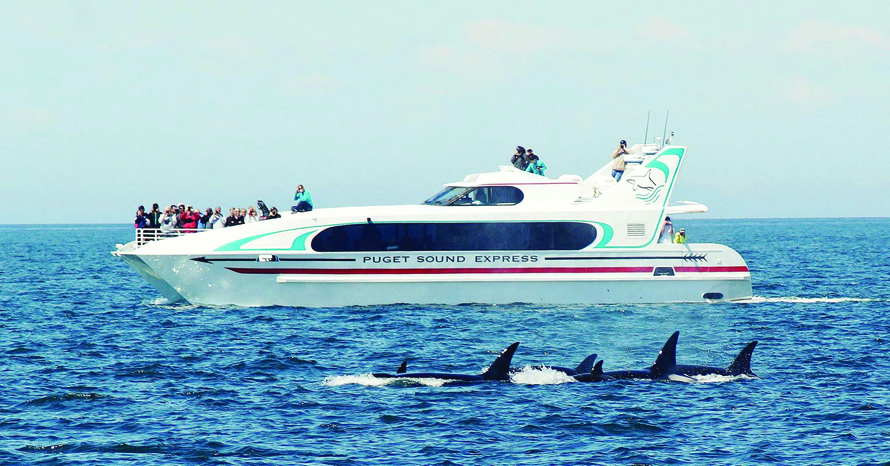
Go see orcas now
On a whale-watching tour, naturalists on board will teach about and point out wildlife, like dolphins, seals, sea lions and bald eagles. You’re likely to see humpback whales and the mammal-eating Bigg’s killer whales, also called transients. If you’re hoping to see Southern Residents, summers (through September) are the best time because that’s when the Southern Residents usually hunt for salmon in the Puget Sound. Their range spans from Vancouver Island to Monterey, Calif.
“It’s an extra treat if you get to see the Southern Residents,” Souze says. “Most people just want to see that black fin in the water and something black and white jump out.”
The Whale Museum in Friday Harbor estimates that more than 500,000 people go whale watching every year in the waters off the Washington and British Columbia coasts, making whale tours a $40–$50 million industry. Do the hordes of whale tour boats bother the whales? Tour companies will tell you the most noise comes from big freighters and tankers, that private pleasure boats are the ones who get too close to the whales. Pollution is a concern too, but Bigg’s killer whales swim in that same water and are doing just fine.
“Basically, it comes down to salmon,” says Clipper Vacations naturalist Stephanie Raymond. “The Southern Residents can’t survive unless they have enough salmon to eat. How do we help restore salmon habitat? Make sure your car isn’t leaking oil. Don’t use too much pesticide on lawns and gardens. Be careful about what ends up in storm water."
“If we were all doing that, we would see some pretty dramatic results pretty quickly. If there’s salmon, then the whales have what they need.”
Raymond has loved the orcas since she was six years old. Now in her ninth season working on a whale boat, she’s witnessed the whales do amazing things. They recognize the sound of different whale boats, and can hear people cheering when they jump out of the water. Younger orcas will stick their heads up (called spyhopping) to see what the boats are up to.
“I don’t want to see them go away. I want to be able to have my grandkids have some of the same experiences,” Raymond says. “I think we still have that hope. But we’re very close to the edge.
“I have to keep hoping, because I just don’t want to face the alternative. It’s a grim situation right now.”
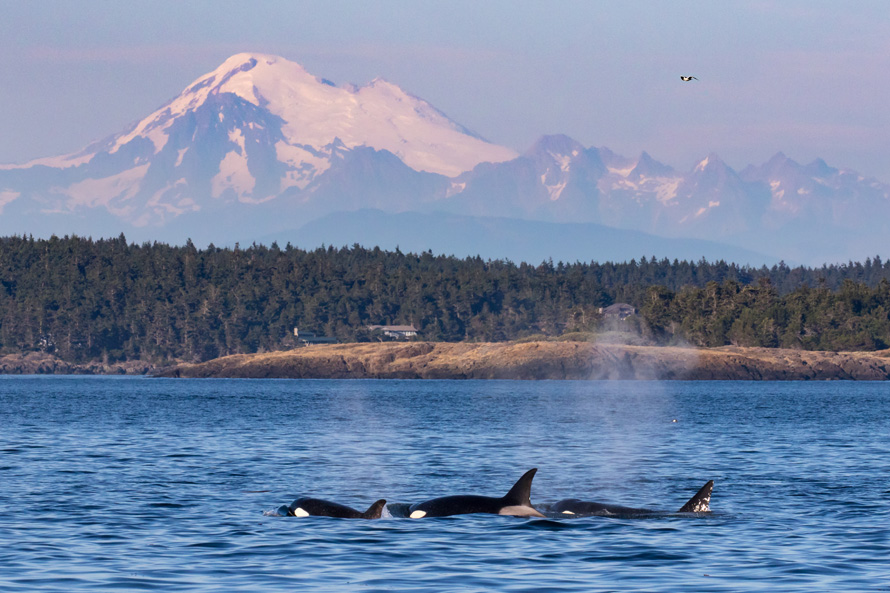
Whale-watching tours for families
Wild orcas aren’t generally frolicking in the busy waters by Seattle’s Great Wheel. They tend to cruise the waters around the San Juan Islands, searching for Chinook salmon to eat.
A number of whale-watching outfits operate out of the San Juans. But getting to the islands is a bit of an ordeal, especially with the summer ferry jam. We’ve rounded up five ferry-free options for Seattle-area families to try to spot the orcas — while they still can.
1. The Clipper, 11.5-hour boat tour from downtown Seattle
The Clipper is the only boat tour that leaves directly from downtown Seattle. The boat departs from Pier 69 at 8:15 a.m., heads up to Friday Harbor, and returns 11.5 hours later. Note that Clipper Vacations does not recommend this trip for children under 6. Other than the two hours allotted to exploring Friday Harbor, you’ll be on the boat the entire time.
“It’s a very long day for little kids,” Raymond says. “The thing about the boat is it’s a moving platform. It’s easy to get hurt. Kids can’t get up and run around and do what kids want to do. It’s not safe.”
For young families, Raymond suggests doing the trip as an overnight to break up the travel time. That’s what she did for her own daughter’s first whale watch, at age 4. Plan ahead, though, because it can be tough to get reservations at Friday Harbor during the summer.
Cost: Through Sept. 9, adult tickets are $126 Mondays, $99 Tuesdays to Thursdays and $138 Fridays and Saturdays. One child ticket (for ages 1–11) can be purchased at $25 per paying adult. Additional children are half the adult fare. Whale sightings guaranteed; you’ll get a coupon for a future free trip if you don’t see any. (Tours do not specifically guarantee an orca sighting; you may see other varieties of whales.)
2. Puget Sound Express, half-day boat tour from Edmonds
Drive 17 miles north to Edmonds for the option of a half-day whale-watching tour. You’ll be on a boat for four to five hours, a more kid-friendly stretch of time. The boat reaches the San Juans in a little over an hour, and usually passengers see whales about 90 minutes into the trip. Puget Sound Express is run by three generations of the Hanke family.
Cost: Adults $135, children (2–10) $85. Whale sightings guaranteed, or your next trip is free. (As above, do not specifically guarantee an orca sighting.)
3. San Juan Cruises, boat tour out of Bellingham
Prefer commuting to the whales by car? Drive 90 miles north of Seattle to Bellingham, which gets you that much closer to the San Juans. The half-day whale watch tour operates weekends through Sept. 9, departing Bellingham’s Alaska Ferry Terminal at noon and returning at 5 p.m.
Cost: Adults $99; youths (ages 6–17) $49.50; children under 6 free. Advance booking gest you $5 off each adult fare and the price includes a lasagna and Caesar salad lunch. Whale sightings (though not specifically orcas) guaranteed, or your next cruise is half off.
4. San Juan Safaris, fly to Friday Harbor from South Lake Union, then board the tour boat
This tour is by far the biggest splurge, but the one with the biggest thrill. You’ll fly on a Kenmore Air seaplane over Seattle and arrive at Friday Harbor. Then get on a San Juan Safaris whale-watching boat for a 3-4 hour whale watch. A 6:30 p.m. flight departs Friday Harbor and brings you back to Seattle 45 minutes later. Seems like a long and wildly stimulating day for little ones, but the tour’s owners welcome kids of all ages on this day trip.
Cost: Through Sept. 15, adults $389; child (ages 2–12) $375; children under 2 free sitting on lap. No whale-sighting guarantee.
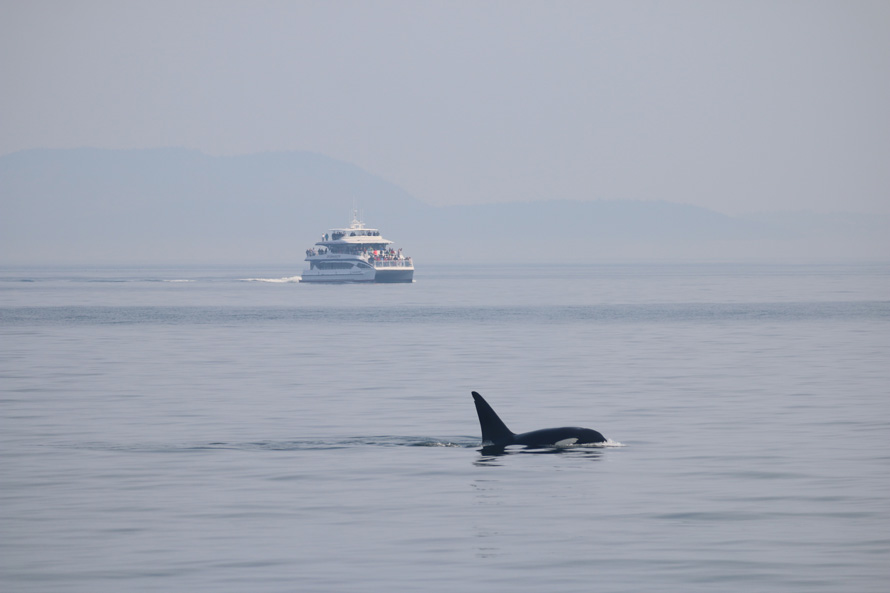
5. Island Adventures Whale Watching, boat tour from Anacortes
Anacortes is an 80-mile drive from Seattle but requires no ferry crossing. Unlike most other tours, this outfit runs tours through December. (If you think it’s chilly on the water in the summer, really make sure to bundle up in the winter.) The tour runs four to five hours, and covers 60 miles looking for wildlife. Through Sept. 3, you can choose from a 10 a.m. or 4 p.m. departure from Anacortes.
Cost: Adults $99; youth (ages 3-17) $69; children (ages 0–2) $1. Discounted adult rate $89 for AAA, AARP, military, seniors and students.
Where to see orcas from land
San Juan Island’s Lime Kiln Point State Park used to be the gold standard for whale watching from land, although Souze says that’s not a big option anymore because the Southern Residents are so scarce. (Plus, there’s that ferry to deal with.) Other traditional whale-watching spots around the Sound are Point Defiance in Tacoma, Point Robinson on Maury Island, Alki Beach in West Seattle and Point No Point in north Kitsap. You never know when it might be your lucky day.
Check the Orca Network’s interactive Google map for the best whale-watching points from land between Anacortes and Olympia. You can zoom in to find directions and details about each location.
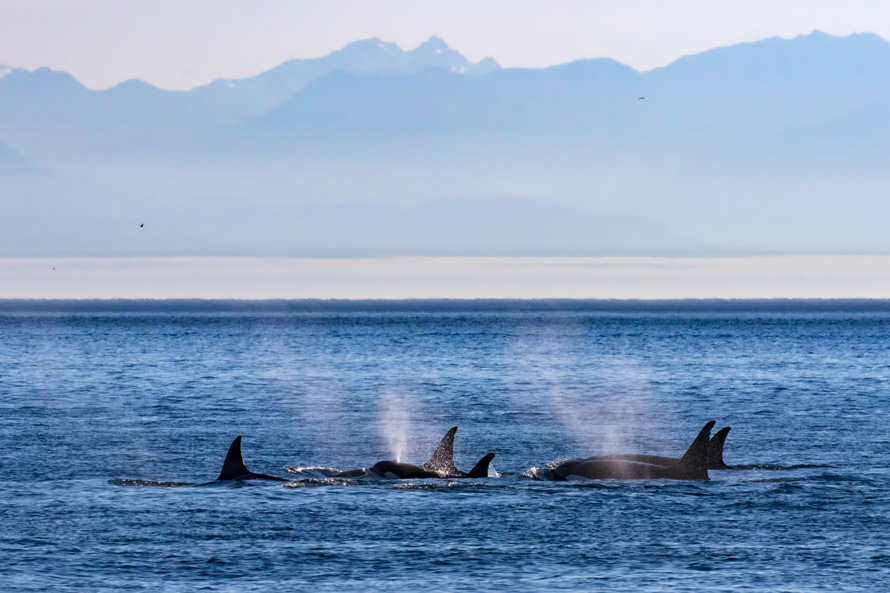
Tips for whale watching with kids
1. Get kids excited about the trip by checking out books about the whales from the library before you go. (Learn some cool facts: killer whales stay with their moms their entire lives, and they can live to be 100 years old!) At OrcaSound.net, you can listen to different calls from live underwater microphones. Visit the Whale Museum in Friday Harbor (open daily, 9 a.m.–6 p.m.), which has a special focus on the orcas.
2. Dress in layers for a boat tour, or pack them. Bring a windbreaker and long pants; the decks can be cold and windy. Bring a hat, sunglasses and sunscreen, even on a cloudy day. Wear flat, closed-toe shoes.
3. Bring lots of snacks and a bottle of water. The last thing you want is to be stuck on a boat with a hangry toddler. Keep in mind the motion of the boat, so choose easy-to-eat snacks.
4. Plan on three hours worth of activities to entertain kids: books, coloring, puzzles, etc. You’ll thank yourself on the trip back.
5. Don’t forget binoculars and a camera.
6. Seasickness is not usually an issue, because the boats are traveling in protected waters. If you pre-emptively dose your kids with Dramamine, be aware that it could make the kids really sleepy by the time the boat arrives at where the whales are.
Want to help the orcas?
We've compiled a list of 7 things you and your family can do to help save the orcas.









